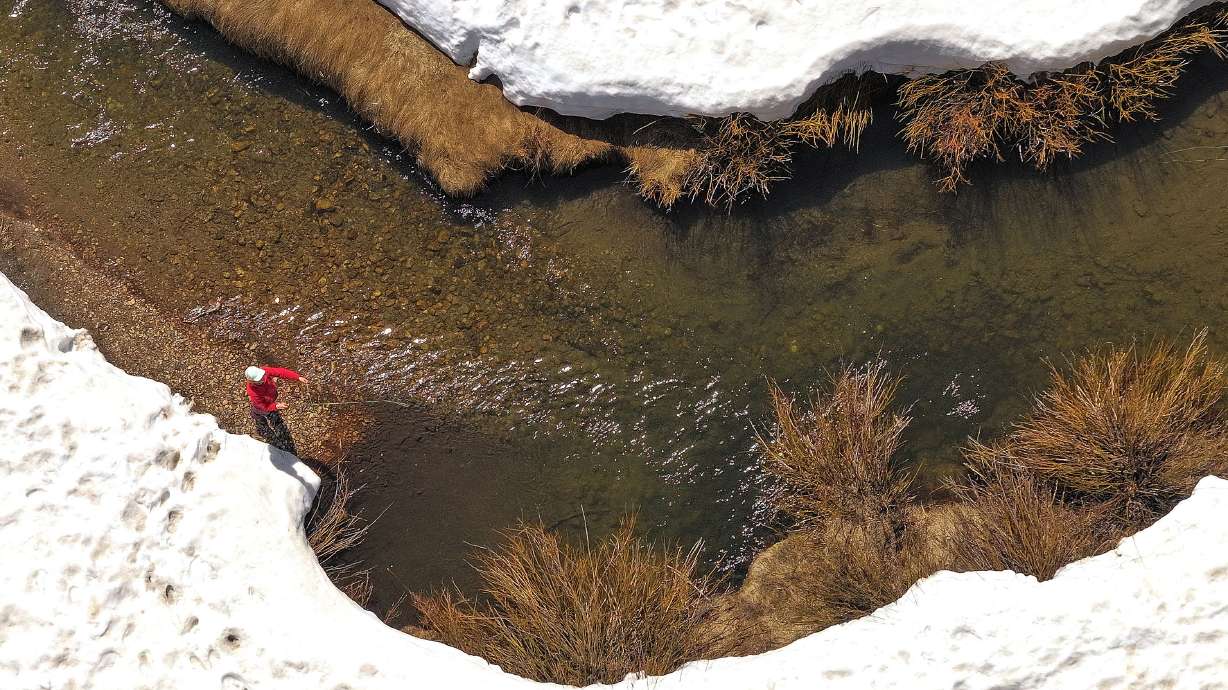Estimated read time: 3-4 minutes
This archived news story is available only for your personal, non-commercial use. Information in the story may be outdated or superseded by additional information. Reading or replaying the story in its archived form does not constitute a republication of the story.
SALT LAKE CITY — Utah's reservoir system is back up to almost 85% — about one percentage point off of last year's peak — with plenty of snowpack left to melt.
That's good news for the state's water supply, but state water managers say that also means they will have to monitor conditions over the next few weeks to avoid flooding concerns.
"The timing and magnitude of our snowpack peak plays a crucial role in our water management strategies. We have all this snow still in the mountains, and we need to pay attention to how it melts," said Candice Hasenyager, director of the Utah Division of Water Resources, in an update on the state water conditions on Thursday.
Utah's statewide average snowpack was down to 15.1 inches of snow water equivalent on Thursday. That's the amount of water within the snow collected in the mountains since the start of the water year. It peaked at 18.8 inches on April 2, which means that about 80% of all the snowpack is left to melt.
This year's peak was 11.2 inches below last year's record snowpack, but it ended up 2.8 inches above the median peak. What's left in the mountains right now is also 3.1 inches above both the 2021 and 2022 peaks, during which Utah was in the midst of one of its worst droughts on record.
Hasenyager said the runoff is "where the magic happens" when it comes to Utah's water supply. About 95% of the supply comes from the snowpack collection and snowmelt process.
The good news is that last year's record did a lot of the heavy lifting when it came to refilling most lakes and reservoirs. Utah's reservoir system, a figure that includes dozens of reservoirs throughout the state — except for Lake Powell and Flaming Gorge — peaked at 86% capacity after falling to 42% in November 2022.
It only dropped to as low as 74% in October 2023 before slowly rising during the snow collection period and irrigation offseason, about 19 percentage points above the median low point.
However, having less space in reservoirs can also make it tricky to ensure that water lands in the right place so the state avoids flooding. That's why Hasenyager said the state will have to keep a close eye on the conditions until the last of this year's collection is gone.
"Knowing how much water to release, and estimating how much water will make its way into the reservoir, requires continual monitoring," she said.
It hasn't been a major issue to this point as the big spring warmups have been followed by stormy cooldowns. This seven-day outlook indicates that this trend will continue. The National Weather Service Climate Prediction Center lists Utah as having greater odds for near-normal or below-normal temperatures to close out April.
Its May outlook notes that near-normal temperatures are more likely in southern Utah, while the outlook is unclear for the rest of the state. This outlook and a smaller snowpack are why local water managers and hydrologists have been more optimistic about this year's flood risks.
The Great Salt Lake and Lake Powell — two larger bodies of water that haven't recovered — also stand to benefit from the high reservoirs since neither is expected to refill and could hold any extra water. Lake Powell is expected to gain about 30 feet over the next few months, while the Great Salt Lake's southern arm is already above last year's peak and may reach 4,196 feet elevation this year for the first time since 2017.
Meanwhile, experts continue to urge residents to be cautious near the state's streams, creeks and rivers as the snowmelt process continues. Utah Division of Water Resources officials note that 60% of the state's stream gauges are indicating "above-normal" flows, showcasing how fast water is flowing from the mountains.
"Any increase in water flow can be dangerous, especially for kids and dogs," said Christopher George, a paramedic for the Salt Lake City Fire Department, after a water rescue demonstration last week. "I would say any sharp increase is going to be dangerous to everyone."









